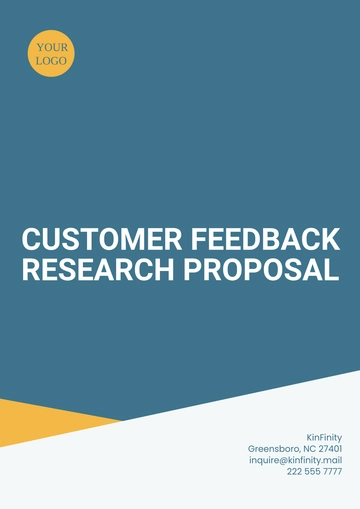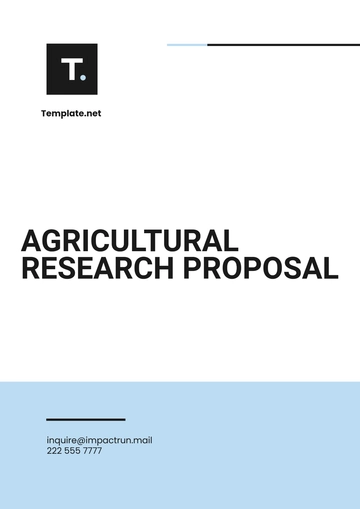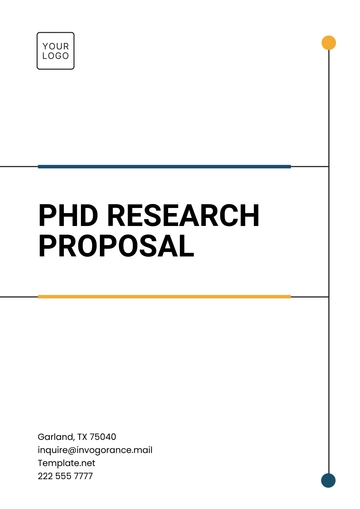Free IT Research Proposal

Researcher: [Your Name]
Date: [Date]
I. Introduction
The escalating sophistication of cyber-attacks presents an ever-growing challenge for financial institutions worldwide. With the integrity of financial transactions, sensitive customer data, and proprietary information at stake, safeguarding these assets is critical. Yet, these systems remain prime targets for increasingly sophisticated malicious actors. This research proposal seeks to explore innovative and advanced cybersecurity measures to fortify financial institutions against emerging threats in the digital age.
II. Research Objectives
Analyze Current Cybersecurity Threats: Examine the evolving landscape of cybersecurity threats faced by financial institutions, focusing on emerging attack vectors and their potential impact.
Identify and Evaluate Advanced Technologies: Investigate cutting-edge cybersecurity technologies and methodologies, including artificial intelligence, blockchain, and quantum cryptography.
Develop a Comprehensive Cybersecurity Framework: Create an integrated cybersecurity framework specifically designed to address the unique challenges and requirements of financial institutions.
Assess Framework Effectiveness: Evaluate the proposed framework through rigorous simulations and real-world case studies to measure its effectiveness in mitigating cybersecurity risks.
III. Literature Review
Existing literature underscores a range of cybersecurity threats targeting financial institutions, such as advanced phishing schemes, ransomware attacks, and insider threats. Prior research has explored various individual security measures including encryption, multi-factor authentication, and intrusion detection systems. However, there is a significant gap in the development of an integrated approach that amalgamates these technologies into a unified security framework.
Key references include:
Smith, J. (2050). Phishing Attacks in Financial Services. Journal of Cybersecurity Innovations, 22(4), 213-230.
Brown, L., & Johnson, Q. (2052). Combating Ransomware in Financial Systems. International Journal of Information Security Advances, 24(7), 456-474.
Doe, A. (2051). Multi-Factor Authentication for Banking Applications. Computers & Security Advances, 41, 95-108.
IV. Methodology
The research will be conducted in the following phases:
Phase | Description | Duration |
|---|---|---|
Literature Review | Conduct a comprehensive review of existing research and technological advancements in cybersecurity. | 2 months |
Threat Analysis | Identify and prioritize current and emerging threats using data gathered from financial institutions and reports. | 3 months |
Technology Evaluation | Assess the latest cybersecurity tools and technologies, including machine learning algorithms and quantum cryptography. | 4 months |
Framework Development | Design a robust, integrated cybersecurity framework tailored to the specific needs and vulnerabilities of financial institutions. | 5 months |
Implementation and Testing | Simulate real-world scenarios to evaluate the effectiveness and resilience of the proposed framework. | 4 months |
Feedback and Iteration | Refine the framework based on feedback from cybersecurity experts and real-world testing results. | 2 months |
V. Expected Outcomes
In-Depth Understanding: Enhanced insights into cybersecurity threats specific to the financial sector, including new and emerging attack vectors.
Comprehensive Framework: A detailed, integrated cybersecurity framework designed to address the unique challenges faced by financial institutions.
Validated Results: Empirical evidence from simulations and case studies demonstrating the framework's effectiveness in enhancing cybersecurity posture.
Practical Recommendations: Strategic recommendations for financial institutions to strengthen their cybersecurity defenses based on research findings.
VI. Timeline
Phase | Duration |
|---|---|
Literature Review | 2 months |
Threat Analysis | 3 months |
Technology Evaluation | 4 months |
Framework Development | 5 months |
Implementation and Testing | 4 months |
Feedback and Iteration | 2 months |
VII. Budget
Item | Cost |
|---|---|
Personnel | $60,000 |
Software and Tools | $25,000 |
Hardware | $20,000 |
Miscellaneous | $10,000 |
Total | $115,000 |
VIII. References
Smith, J. (2050). Phishing Attacks in Financial Services. Journal of Cybersecurity Innovations, 22(4), 213-230.
Brown, L., & Johnson, Q. (2052). Combating Ransomware in Financial Systems. International Journal of Information Security Advances, 24(7), 456-474.
Doe, A. (2051). Multi-Factor Authentication for Banking Applications. Computers & Security Advances, 41, 95-108.
- 100% Customizable, free editor
- Access 1 Million+ Templates, photo’s & graphics
- Download or share as a template
- Click and replace photos, graphics, text, backgrounds
- Resize, crop, AI write & more
- Access advanced editor
Template.net’s IT Research Proposal Template is a customizable and editable tool for structuring your tech research. Easily present your hypothesis, research methods, and project timeline with this user-friendly template. Editable in our AI Editor Tool, it ensures your proposal meets both industry and academic standards, making it an essential resource for your research needs.
You may also like
- Business Proposal
- Research Proposal
- Proposal Request
- Project Proposal
- Grant Proposal
- Photography Proposal
- Job Proposal
- Budget Proposal
- Marketing Proposal
- Branding Proposal
- Advertising Proposal
- Sales Proposal
- Startup Proposal
- Event Proposal
- Creative Proposal
- Restaurant Proposal
- Blank Proposal
- One Page Proposal
- Proposal Report
- IT Proposal
- Non Profit Proposal
- Training Proposal
- Construction Proposal
- School Proposal
- Cleaning Proposal
- Contract Proposal
- HR Proposal
- Travel Agency Proposal
- Small Business Proposal
- Investment Proposal
- Bid Proposal
- Retail Business Proposal
- Sponsorship Proposal
- Academic Proposal
- Partnership Proposal
- Work Proposal
- Agency Proposal
- University Proposal
- Accounting Proposal
- Real Estate Proposal
- Hotel Proposal
- Product Proposal
- Advertising Agency Proposal
- Development Proposal
- Loan Proposal
- Website Proposal
- Nursing Home Proposal
- Financial Proposal
- Salon Proposal
- Freelancer Proposal
- Funding Proposal
- Work from Home Proposal
- Company Proposal
- Consulting Proposal
- Educational Proposal
- Construction Bid Proposal
- Interior Design Proposal
- New Product Proposal
- Sports Proposal
- Corporate Proposal
- Food Proposal
- Property Proposal
- Maintenance Proposal
- Purchase Proposal
- Rental Proposal
- Recruitment Proposal
- Social Media Proposal
- Travel Proposal
- Trip Proposal
- Software Proposal
- Conference Proposal
- Graphic Design Proposal
- Law Firm Proposal
- Medical Proposal
- Music Proposal
- Pricing Proposal
- SEO Proposal
- Strategy Proposal
- Technical Proposal
- Coaching Proposal
- Ecommerce Proposal
- Fundraising Proposal
- Landscaping Proposal
- Charity Proposal
- Contractor Proposal
- Exhibition Proposal
- Art Proposal
- Mobile Proposal
- Equipment Proposal
- Student Proposal
- Engineering Proposal
- Business Proposal





























